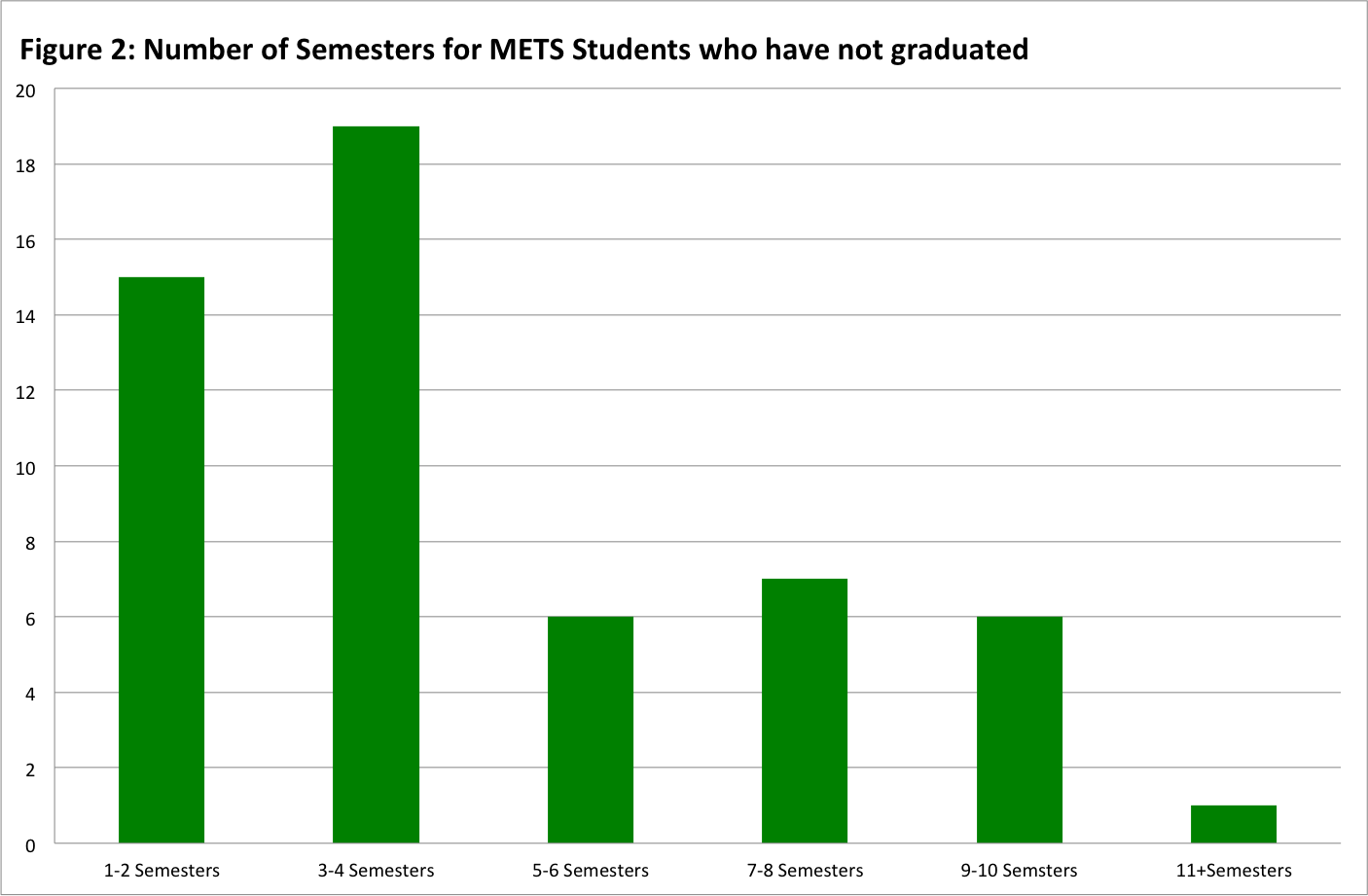Now that we have studied the attainment rates of METS students,In the next few posts, we will be looking at the some of the attainment trends from the METS enrollment class of 2007-2008. Today, we’re taking a closer look at the length of time METS students are spending in their postsecondary education by first looking at the number of different colleges attended by METS students, the number of students taking classes at multiple college simultaneously, and then the number of semesters in college for METS students who did not complete a postsecondary degree.
Students enrolling at more than one institution simultaneously
An interesting detail that came out during our attainment study was that many students were enrolling at more than one institution at a time. Sometimes this looked like they were enrolled at one of the online programs from UMaine, which can show as being enrollments at more than one University of Maine System school at a time. Other times, it looked like students were taking classes in the community during summer or winter breaks, possibly to take advantage of the lower cost of community college classes. In all, 19 out of 125, or approximately 15% of METS students took classes at more than one institution simultaneously.
College classes during high school
One area that we were unable to study was the impact college classes during high school had on the completion rates of METS students. While initial looks at the data does seem to show a strong correlation between having taken a college class in high school, and success in postsecondary education, the data was incomplete, so any conclusions would also be incomplete. This is definitely an area worthy of further study.
Years of attendance
In Figure 1: data is broken down by the number of years it took for METS students to graduate, and the number of different colleges they attended. This data is also presented for students who have not yet graduated.
Figure 1: Length of time in postsecondary education
| Number of Colleges Attended | Postsecondary completion within 4 years | Postsecondary completion within 6 years | Postsecondary completion in more than 6 years | Subtotal for postsecondary completion | Students who have not yet completed |
| One | 25 | 7 | 2 | 34 | 37 |
| Two | 12 | 6 | 2 | 20 | 17 |
| Three | 2 | 1 | 1 | 4 | 4 |
| Four | 0 | 2 | 2 | 4 | 1 |
| Five | 1 | 1 | 1 | 3 | 1 |
| Totals | 40 | 17 | 8 | 65 | 60 |
What does this tell us?
METS students attended between one and five colleges, whether or not they completed college. For those who completed a degree, about half, or 53.3%, attended only one institution.
The next most likely scenario was attending two colleges, with 30.7%. 16.9% of those who completed a degree attended between 3 and 5 institutions. These rates were roughly the same with students who did not complete a degree, with 61% attending only one institution, 28% two institutions, and 10% attending more than two institutions.
Common sense would tell us that students who stay at one institution are more likely to finish their degree quickly, and that does appear to be borne out in the data. However, it is also evident that METS students who don’t find themselves a good fit at their first college, are often moving on and having success at another institution. Sometimes, this is because they have switched from a four year institution to a two year college, other times the other way around.
What does this tell us?
To flesh this out a little bit more, only 7 METS students dropped out after one semester. One thing this clearly indicates is that METS students are not giving up on college easily. When you combine the information from this chart, with the fact that 10 of these METS students who didn’t graduate are still currently enrolled in college, and the fact that just about a third of METS students who haven’t graduated tried more than one college.. It is evident that this is a persistent group of students.
It is also clear that the second year of college is a stumbling block for many METS students, like it is for many students. In recent years, METS has partnered more actively with the Maine Educational Opportunity Center to help provide Financial Aid services for METS alums. It will be interesting to see in future years if this sort of partnership has impacted the number of students who get through that stretch of college.
METS also refers appropriate students to programs that serve students while they are in college, such as Student Support Services. Unfortunately, it is unknown how many METS students actively use such services. This is yet another area that is worth of more research.
Next up in our series on METS Outcomes we will be taking a closer look at how METS students perform at some of our more common schools of enrollment.
Want to make sure you don’t miss anything new on the METS Site? You can follow us by clicking on the Subscribe link on the bottom of every page of the site!

